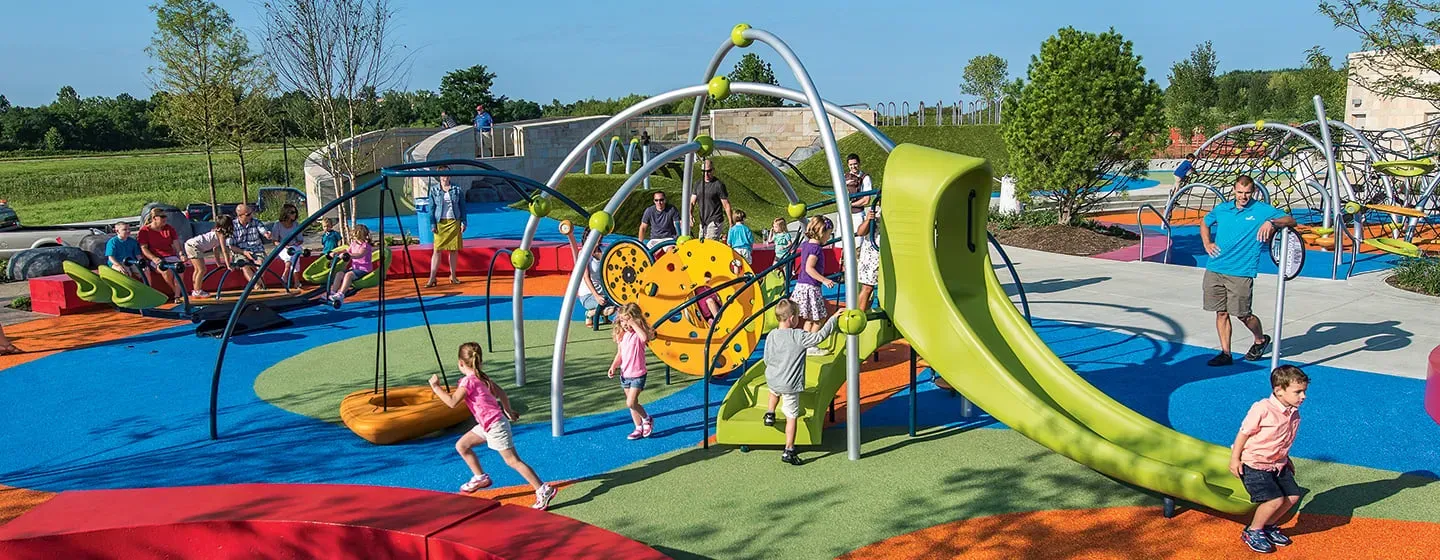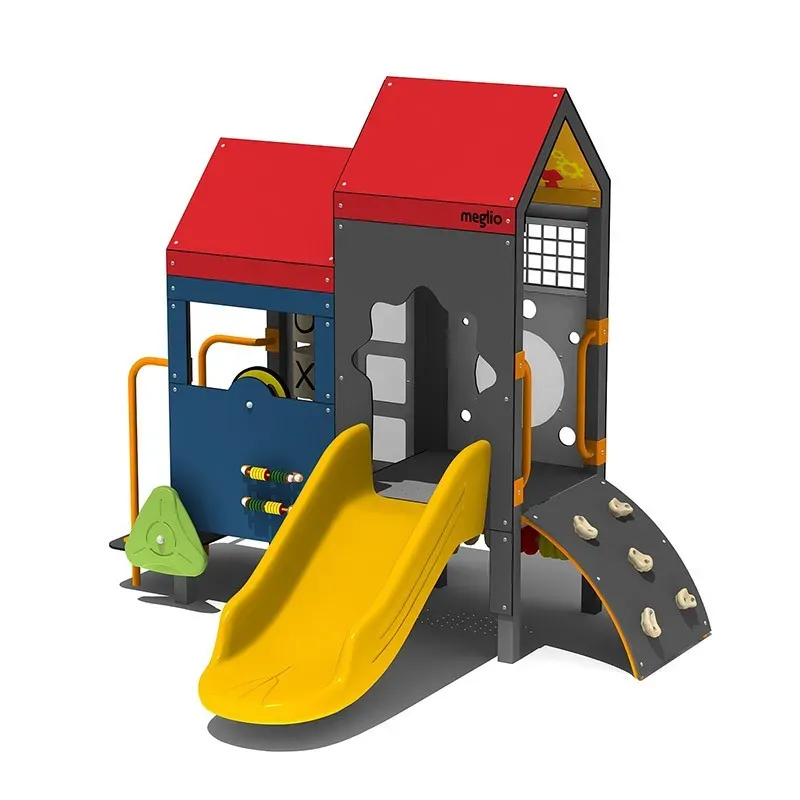Table of Contents
Watching a two-year-old discover the sheer joy of a tiny slide or a five-year-old conquer a climbing structure is pure magic. Kids this age are bundles of energy, constantly learning and testing their limits. And let's be honest, sometimes you just need them to burn off some of that boundless enthusiasm outside. That's where the right playground equipment for 2-5 year olds comes in. But wading through the options can feel like navigating a jungle gym blindfolded. You want something safe, something fun, and something that actually holds their attention for more than five minutes.
Why Playground Equipment for 25 Year Olds Matters (And What They Need)
Look, raising tiny humans is a marathon, not a sprint, and sometimes you just need an assist. Quality playground equipment for 2-5 year olds isn't just about keeping them busy so you can maybe, just maybe, finish a cup of coffee while it's still hot. It's fundamental to their development. At this age, their brains are wiring at warp speed, and their bodies are figuring out how to move, balance, and coordinate. They aren't just playing; they're building the physical foundation for everything that comes next, from running track to simply not tripping over their own feet constantly. They're learning cause and effect by pushing a swing, figuring out social cues (or the lack thereof) when sharing a slide, and boosting their confidence with every successful climb.
MustHave Playground Equipment for Toddlers and Preschoolers

MustHave Playground Equipment for Toddlers and Preschoolers
The Non-Negotiables: Keeping it Simple (and Safe) for the Littlest Ones
When you're looking at playground equipment for 2-5 year olds, especially for the two and three-year-olds, think low and slow. They're still mastering walking without face-planting, let alone complex acrobatics. What they need are things that build confidence without being terrifying. A small, low slide with wide steps and a gentle slope is gold. Forget the twisty, towering monsters; simple is better here. Look for swings with bucket seats that hold them securely – the kind that prevent them from doing an unintentional swan dive. Sandboxes are fantastic; they encourage imaginative play and fine motor skills (digging, scooping, building castles that immediately get stomped). Water tables are another winner, especially when it's warm. These basic pieces are the bedrock of a toddler's play space.
Stepping Up the Challenge: Engaging the Preschool Crowd
As they edge closer to five, their abilities explode. They're ready for a bit more challenge and complexity in their playground equipment for 2-5 year olds. Think low climbing structures – maybe a small rock wall section or a cargo net they can navigate. Playhouses or structures with decks and slides offer opportunities for role-playing and social interaction. Balance beams, even low ones, help refine those crucial motor skills. Swings can transition from buckets to standard sling seats as their core strength improves. The key is providing variety that matches their growing physical prowess and burgeoning imagination. You want equipment that encourages exploration and problem-solving, not just repetitive action.
- Small, low slides with wide steps
- Bucket swings for security
- Sandboxes and water tables
- Low climbing structures (small walls, nets)
- Playhouses or multi-level structures
- Low balance beams
- Standard sling swings (as they get older)
Choosing and Installing Safe Playground Equipment for 25 Year Olds

Choosing and Installing Safe Playground Equipment for 25 Year Olds
Alright, so you've got the vision: happy kids, sunshine, maybe you actually sitting down for a minute. Now comes the nitty-gritty: Choosing and Installing Safe Playground Equipment for 2-5 Year Olds. This isn't the time to just grab the cheapest plastic swing set you see online. We're talking about preventing scraped knees turning into broken bones, or worse. Before you even click 'buy' or dig a single hole, you need a plan. Where is this stuff going? Is the ground level? What's *under* the equipment? Concrete is a hard no, obviously. Grass isn't much better when a kid takes a tumble from any height. You need proper surfacing – think wood chips, shredded rubber mulch, or sand, and enough of it to cushion a fall. And speaking of falls, check the fall height rating on any equipment you're considering and match it to the depth of your chosen surfacing material. Don't just eyeball it; there are actual safety standards (like ASTM F1487) that aren't just suggestions, they're there to keep little heads from getting cracked.
- Check for ASTM F1487 certification.
- Measure available space carefully.
- Plan for adequate safety surfacing (wood chips, rubber mulch, sand).
- Ensure sufficient fall zones around equipment.
- Avoid placing equipment over hard surfaces like concrete or asphalt.
- Read installation instructions *before* starting.
Safety First: Maintaining Playground Equipment & Your FAQs

Safety First: Maintaining Playground Equipment & Your FAQs
The Drab Reality: Keeping the Fun from Turning Dangerous
you’ve picked the perfect playground equipment for 2-5 year olds, got it installed (hopefully without too much swearing), and the kids are loving it. Great. Now for the part nobody Instagrams: maintenance. This isn't optional. That shiny new slide or sturdy swing set is going to face sun, rain, maybe even snow depending on where you are. Bolts loosen, wood splinters, plastic cracks, and rust happens. Ignoring these things is basically setting a trap for tiny fingers and toes. You need a regular inspection routine. We're talking weekly checks for loose bolts, worn ropes, splintered wood, or anything that looks out of place. After a big storm? Check again. It’s monotonous, sure, but it’s the difference between a fun afternoon and a trip to the emergency room. Think of it as the unglamorous but absolutely critical final step in providing safe playground equipment for 2-5 year olds.
Seriously, grab a wrench and a screwdriver. Walk around the equipment. Jiggle the railings. Check the bolts. Look for sharp edges or points. Is the surfacing still deep enough everywhere, especially under swings and at the end of slides? Are there any trip hazards? This isn't rocket science, but it requires consistency. My neighbor thought his plastic fort was indestructible until a cracked step sent his kid tumbling. A two-minute visual check could have prevented it.
Common Headaches & What to Ask About Your Playground Setup
Beyond the regular tighten-and-check routine, parents often wonder about specific issues. What about cleaning? A simple hose-down and maybe some mild soap for plastic parts is usually fine, but avoid harsh chemicals. What if a part breaks? Don't try to jury-rig a fix with duct tape and hope. Contact the manufacturer for replacement parts. Using non-standard parts can compromise the structural integrity and safety rating of the playground equipment for 2-5 year olds. Another frequent question: pests. Are ants building a colony in the sand? Is there a wasp nest near the swings? Deal with these swiftly but safely. You don’t want unexpected stings interrupting playtime.
Here are some questions you should be asking yourself (and the manufacturer) regularly:
- Are all nuts and bolts tight?
- Is the safety surfacing material at the correct depth?
- Are there any signs of rust, cracks, or splinters?
- Are swing chains or ropes worn or frayed?
- Is the equipment anchored securely?
- Are there any new trip hazards around the play area?
Making Playtime Count for Your Little Ones
Getting the right playground equipment for 2-5 year olds isn't just about filling space; it's about investing in their development and frankly, your sanity. We've covered why age-appropriate play is non-negotiable, highlighted the gear that actually works for this age group, and hammered home the critical importance of safe setup and ongoing checks. It takes a bit of effort to choose well and maintain properly, sure. But watching them confidently navigate a structure you picked, seeing their imagination take flight on a simple climber, or just getting a few minutes to sip coffee while they're happily engaged outdoors? That's the payoff. It's not about creating a perfect, sterile play zone, but a space where they can safely push boundaries and burn off energy, leaving you slightly less frazzled at the end of the day.